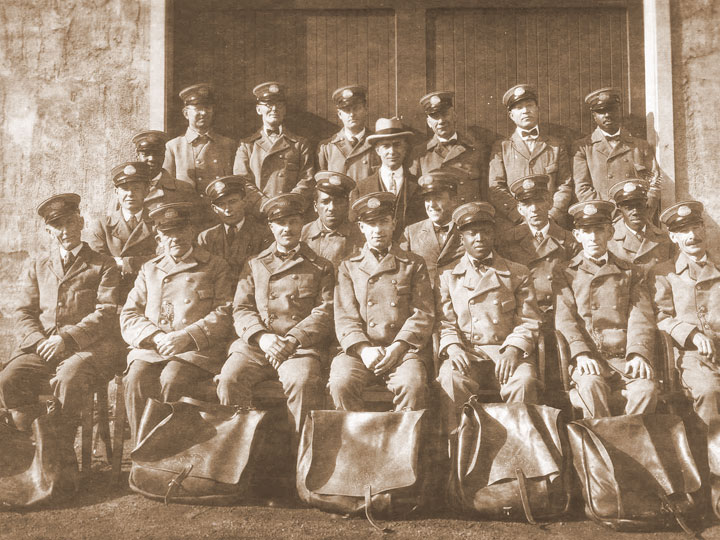
A shift from federal segregation to desegregation came in the early 1920’s under Republican administrations. The number of African Americans employed in the Post Office Department (POD) began to increase during President Warren G. Harding’s Administration (1921-1923).(1) By 1928, it was estimated that African Americans made up 15 to 30 percent of postal employees in major post offices.(2)
The status of African Americans postal employees continued to improve during the 1920’s and 1930’s. In 1925, the First Assistant Postmaster General, J. H. Bartlett, attended a meeting of African American postal workers. In a formal address, Bartlett discussed the “The Value of the Negro [sic] to the Postoffice.”(3) In his address, Bartlett encouraged African Americans to take advantage of the opportunities available to them through employment with the POD. He stated that of the 46,739 city letter carriers in the United States, 2,400 were African American and pointed out that many African American men had just been appointed to supervisory positions in New York and Chicago post offices.(4)

Opportunities for African Americans for advancement within the Post Office Department continued under President Herbert Hoover and his Postmaster General, Walter F. Brown. At the fifth biennial convention of the National Alliance of Postal Employees (later NAPFE), the Second Assistant Postmaster General, on behalf of Brown, emphasized to the convention attendants that Postmaster General had the “concept of a fair deal for all.”(5) The Assistant Postmaster General also pointed out that “colored [sic] employees [could] be assured that their prospects [were] more brilliant than ever” and that Postmaster General Brown would work so that the “colored [sic] man [would] be given every chance for advancement in the [postal] service along with his fellow workers on the basis of seniority.”(6)

Retired Railway Post Office Clerk John Wesley Dobbs’ story illustrates the Post Office Department’s promises of advancement for African American postal workers. Dobbs, when interviewed in 1939 recalled that after 24 years with the railway mail service, he was promoted and put in charge of his crew. Dobbs rose to “grade ‘6’, [the] highest grade in the railway mail service, which carried . . . the maximum pay.”(7) Dobbs also noted that although all his coworkers were white, when he was “made clerk in charge there was never any friction” and they all “worked together beautifully.”(8)
In addition to the Post Office Department’s steps towards desegregation, the number of African American federal employees doubled under Republican Administrations.(9) Beginning in the early 1920’s, President Harding’s Secretary of Commerce, Herbert Hoover, began the desegregation of the Census Bureau. Hoover’s efforts to reverse federal discrimination continued further and offices in the Commerce, Interior, and Treasury departments were desegregated.(10)
1) Samuel Krislov, The Negro in Federal Employment; The Quest for Equal Opportunity, (Minneapolis, MN: University of Minnesota Press, 1967), 22.
2) Ibid, 22.
3) “Bartlett Describes Negro Opportunity in Postal Service”, The Washington Post, November 15, 1925, ProQuest Historical Newspapers The Washington Post (1877-1990), 12.
4) Ibid, 12.,
5) “Glover Addresses Postal Employees”, The Washington Post, July 17, 1929, ProQuest Historical Newspapers The Washington Post (1877-1990), 11.
6) Ibid, 11.
7) John Wesley Dobbs, Interviewed by Geneva Tonsill, manuscript, December 2, 1939, 6.
8) Ibid, 8.
9) Kristlov, 22.
10) Ibid, 22.
